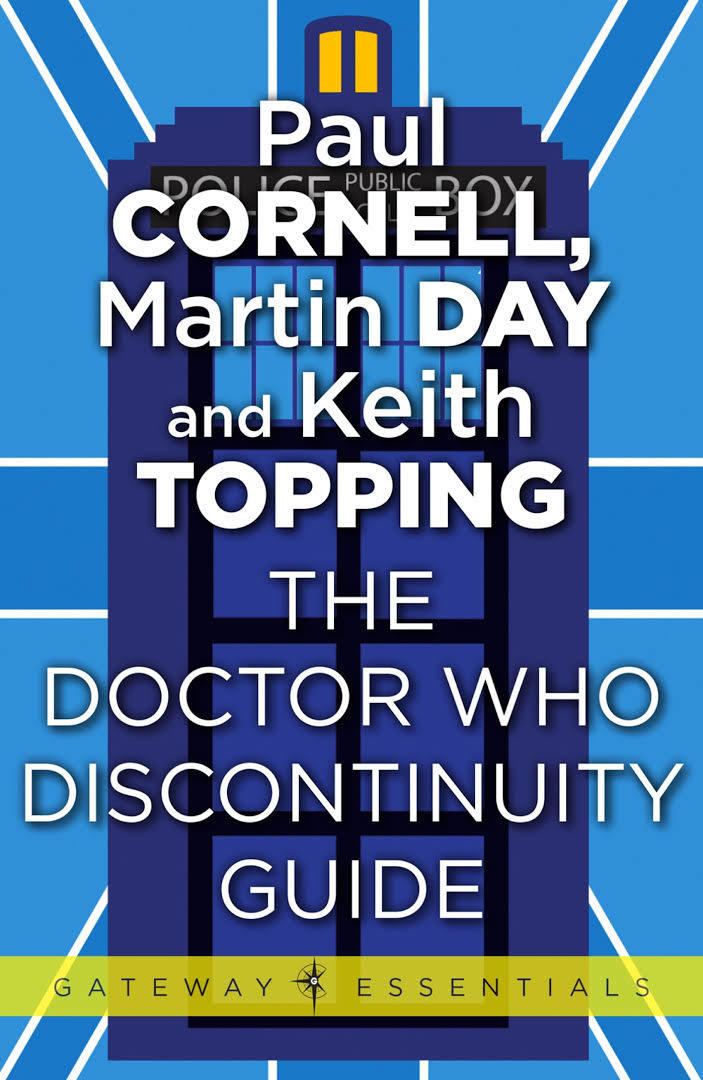8.4 /10 1 Votes8.4
Cover artist Slatter–Anderson ISBN 0-426-20442-5 Originally published 1995 Genres Fiction, Science Fiction | 4.2/5 Goodreads Language English Pages 357 (first edition) OCLC 60225122 Page count 357 (first edition) Country United Kingdom | |||||||||||||||||||||||||||||||||
 | ||||||||||||||||||||||||||||||||||
Similar Martin Day books, Doctor Who Reference books, Doctor Who books | ||||||||||||||||||||||||||||||||||
The Discontinuity Guide is a 1995 guidebook to the serials of the original run (1963–1989) of the BBC science fiction series Doctor Who. The book was written by Paul Cornell, Martin Day and Keith Topping and was first published as Doctor Who - The Discontinuity Guide on 1 July 1995 by Virgin Books.
Contents
Contents
The book focuses on the fiction of Doctor Who. For each serial, the authors discuss the roots of the story, technical and narrative gaffes, technobabble, dialogue disasters and triumphs, continuity, and a "bottom line" critical analysis of the story. The book also contains short essays on subjects in Doctor Who continuity, such as the Doctor's family, the history (or histories) of the Daleks, UNIT dating and the origins of the Time Lords. One of these essays marked the first publication of the ′Season 6B′ theory.
Publication history
The book was first published in 1995 by Doctor Who Books, an imprint of Virgin Books. At the time, Virgin held the licence to publish Doctor Who books from the BBC, and published licensed Doctor Who novels and other non-fiction books under the Doctor Who Books imprint.
The guidebook was subsequently given an un-licensed re-print as simply The Discontinuity Guide in November 2004 through MonkeyBrain Books, with a new foreword by Lou Anders. In 2013, it was published as an ebook — as The Doctor Who Discontinuity Guide — by Orion Publishing Group under its Gateway imprint.
Additionally, the BBC's Doctor Who website incorporated the book's text, along with that of Doctor Who: The Television Companion by David J. Howe and Stephen James Walker, into its classic series episode guide.
Reception
Lars Pearson described The Discontinuity Guide as "a lively romp though all the show's consistencies and inconsistencies." When the book was reissued in 2004, Sfcrowsnest gave it a negative review, criticising the re-issue for not updating the volume to incorporate information about the 1996 film or the then-impending new series with Christopher Eccleston, and stating that overall "Serious 'Dr Who' fans will find the book a worthy addition to their bookshelves, but more casual readers will probably want to find a more user-friendly and attractive book or web-site instead". The SF Site gave a more mixed review, praising the book for its humour while stating that the book would probably appeal more to fans wanting to know the finer details of the serials but that more casual fans would not enjoy it as much. In the acknowledgements of The Greatest Show in the Galaxy: The Discerning Fan's Guide to Doctor Who, Marc Schuster and Tom Powers praised The Discontinuity Guide for its "playful wit".
